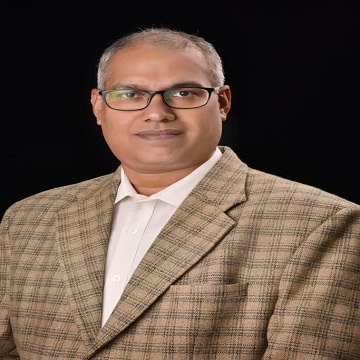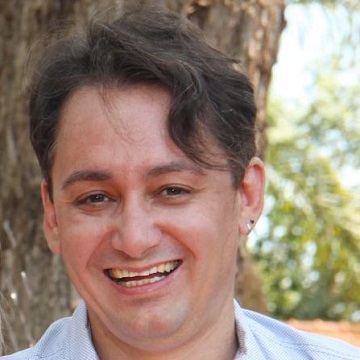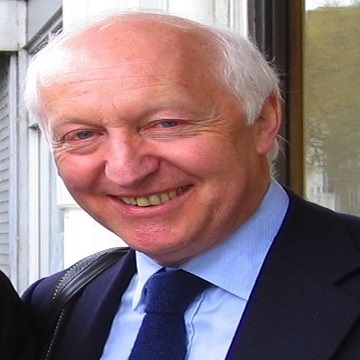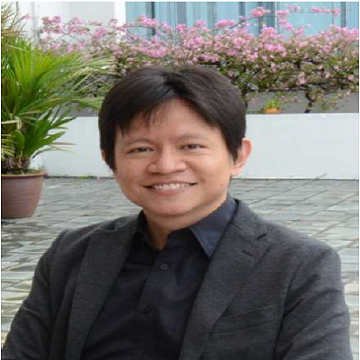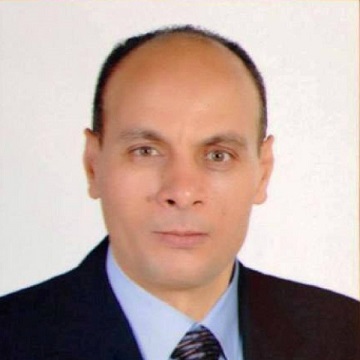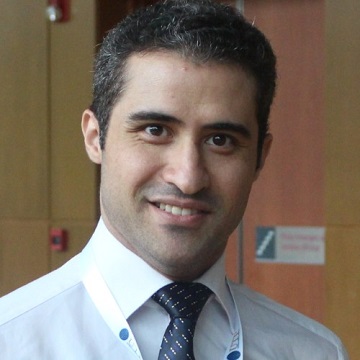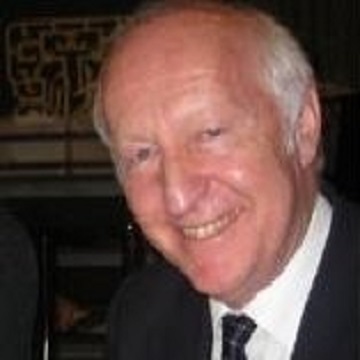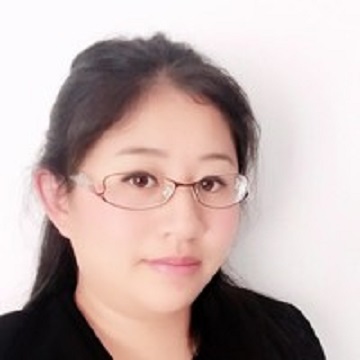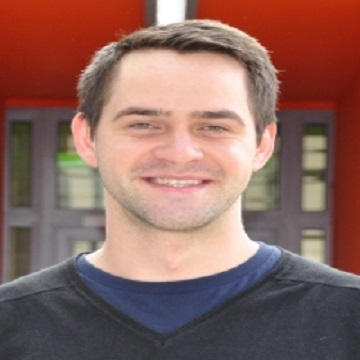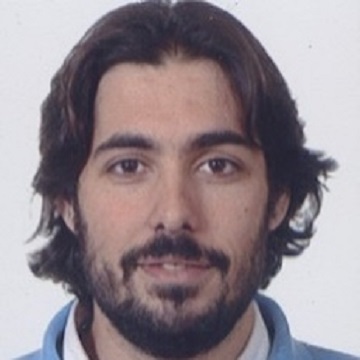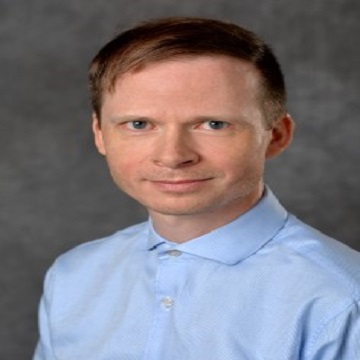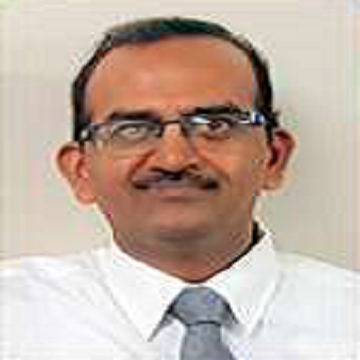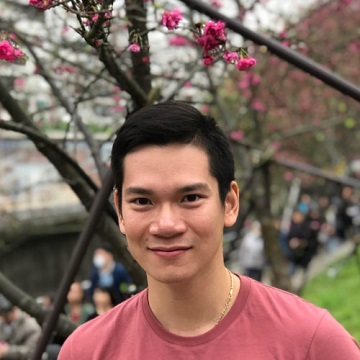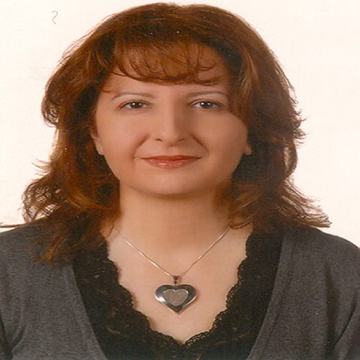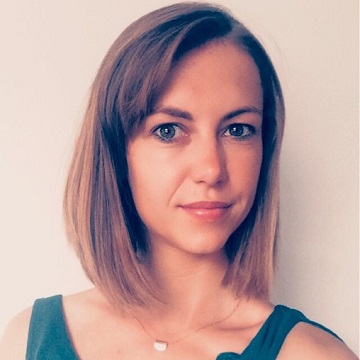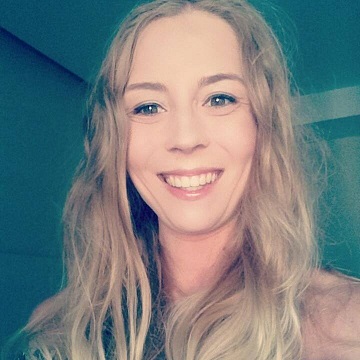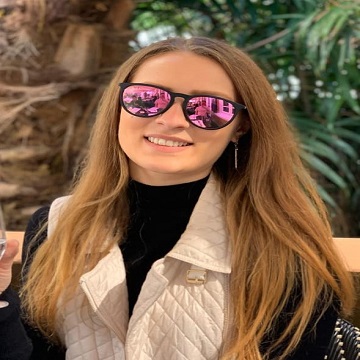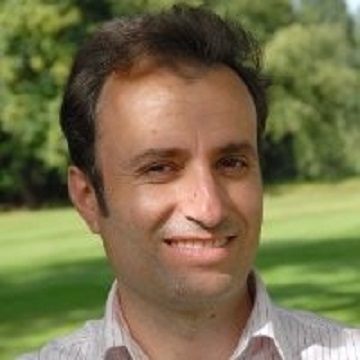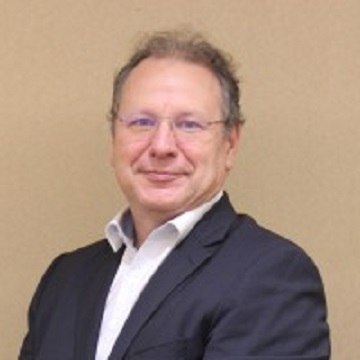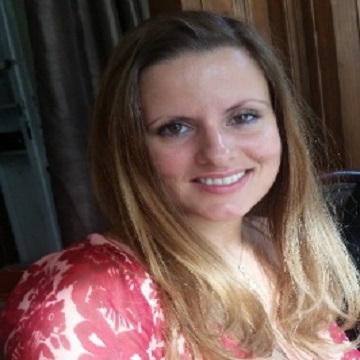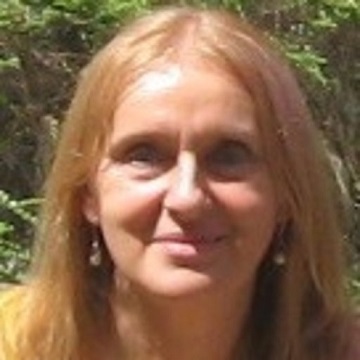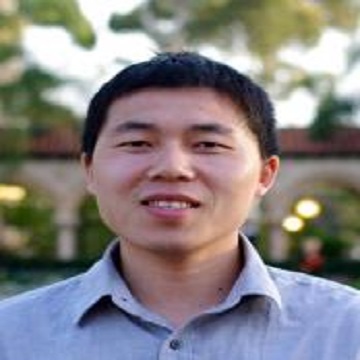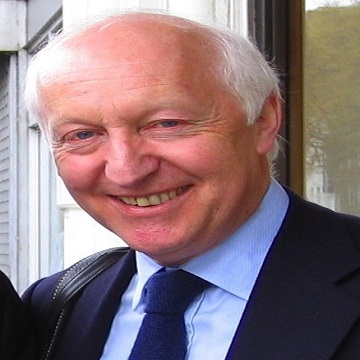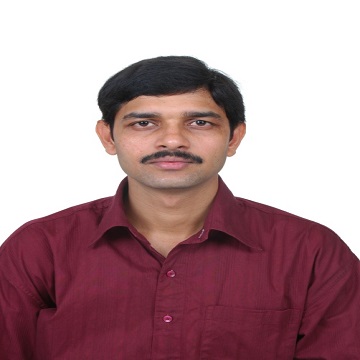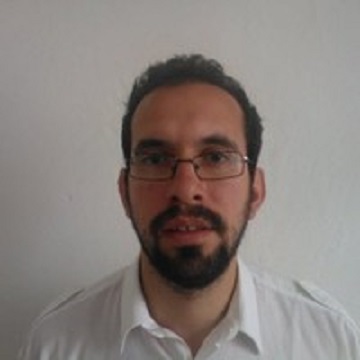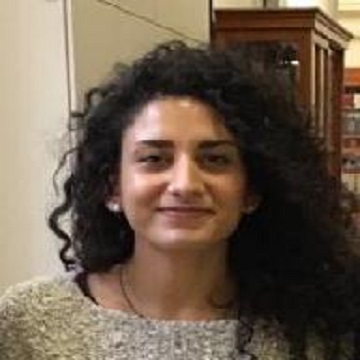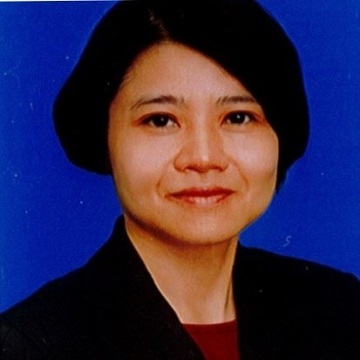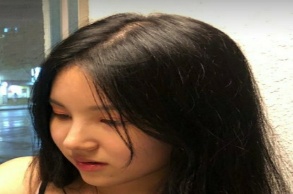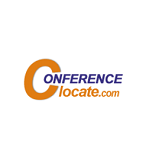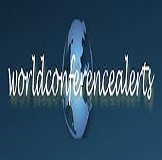
Biosensor and Bioelectronics-2020
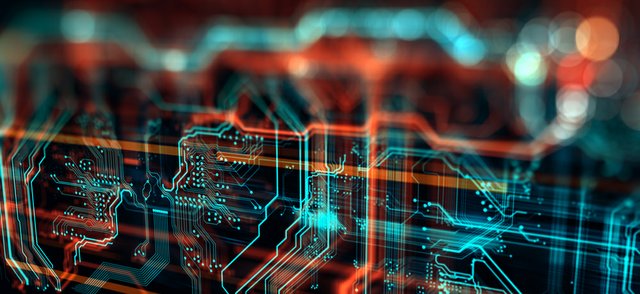
Theme: Future development and new intervention in Biosensors and Bioelectronics
Meetings International presents International Webinar on Biosensors and Bioelectronics, scheduled on July 20, 2020 in Paris, France time zone(GMT+2); which will allow the professional to characteristic their exploration of work through introductions and have a probability to select up mastering about the present circumstance of bioengineering while staying at their preferred place.
Biosensors & Bioelectronics seems to be the constantly trending subject matter with modern day research technologies. Everyone who explores to strengthen their knowledge and gain extended about advanced technical cleverness is welcome to present/get new ideas. Biosensors congress captivates individuals both from commercial and academic worlds yet establishes a firm link and binds us together with the recent updated accomplishments. We provide a good opportunity by admiring your updated research and also by publishing it in our respective journals. We assure our attendees return to their place with the self-belief to improve their abilities and outfitted with certified approaches to work with us.
Scientific Sessions
Nanosensors are sensors at the “Nano” scale. These are chemical or mechanical sensors that can be used to discover the presence of chemical species and nanoparticles, or monitor physical parameters together with temperature, at the Nano scale. As in lots of distinct technological sections, nanomaterials have demonstrated their appropriateness for biosensing programs. The clever use of such nano-gadgets led to in reality improved performances with expanded sensitivities and diminished detection limits of several orders of magnitudes.
2. Lab-on-a-chip and multiplexed sensors
Lab-on-a-chip is a category of tool that integrates and automates more than one laboratory techniques into a gadget that fits on a chip up to a most of some rectangular centimetres in length. By manipulating reagents at the microscale results which include speedy heating and combining can be exploited and multiplexed sensors allow the sign delivered to an tool to be scanned or switched among multiple sensors. The multi-channel checking out of a couple of sensors/samples increases pattern throughput and the productivity of luxurious instrumentation.
3. Microfluidics and Bio-MEMS/NEMS
Microfluidic structures have shown unequivocal performance upgrades over conventional bench-pinnacle assays across various performance metrics. Micro-scale/Nano-electromechanical systems (MEMS/NEMS) should be intended to perform expected capacities in brief spans, regularly in the millisecond to picosecond extend. Most mechanical properties are known to be, scale subordinate subsequently, the properties of Nanoscale structures should be estimated. Biomechanical autonomy is the utilization of natural qualities in living life forms as the learning base for growing new robot outlines. The term can likewise allude to the utilization of natural examples as practical robot segments. Biomechanical technology converges the fields of computer science, bionics, science, physiology, and hereditary building.
4. Commercial biosensors, manufacturing and markets
During the beyond 5 years, biosensors have penetrated numerous markets. The biosensors market is specially categorized into packages, which include the point-of-care, studies labs, biodefense, environmental tracking. However, biosensors marketplace is characterised via slower tempo of commercialization, which is frequently attributed to high price, availability of effective opportunity technology and there are nicely over 500 groups international currently operating within the location of biosensors and bioelectronics. Some of those organizations are immediately concerned in biosensor fabrication/advertising, whereas others play an vital position in offering the essential uncooked-substances/reagents/gadgets for the production of biosensors.
The global market for biosensors is expected to attain over $25 billion via 2020. With biosensor programs in such areas as healthcare, environmental, commercial, security and defense, this marketplace is expected to obtain exponential growth over the approaching years. This conference tune will recognition on the trendy in commercialization and technological advances in biosensors.
5. DNA- and nucleic acid-based sensors and aptasensors
Nucleic acids can be analyte or molecular recognition elements in biosensors. With the discovery of evolutionary synthesis techniques implemented to nucleic acids new forms of biomolecular receptors are accessible. Nucleic-acid aptamers have attracted excessive hobby and located extensive applications in a range of areas. Recently, the aggregate of aptamers with novel nanomaterials has significantly improved the performance of aptamer-based totally sensors. In view of the exceptional benefits added through aptamers, we anticipate aptamer-based totally biosensors to find large packages in biomedical diagnostics, environmental monitoring and native land safety. In quick, even as there's nevertheless a protracted way to head, we expect that aptamer-based biosensors will in the end turn out to be a actual-global tool that would meet demanding situations that might in any other case be impossible with currently available technologies.
Chemical sensing utilizing optics is under broad research everywhere throughout the world and numerous optical compound sensors are finding expanding application in industry, ecological checking, medication, biomedicine and synthetic examination. Optical chemical sensors have been the focal point of a lot of research consideration lately in light of their significance in mechanical, natural and biomedical applications. This class of sensors consolidates compound and natural acknowledgment with progresses in optoelectronic advancements. The utilization of solgel materials to these sensors, particularly as thin films, has pulled in extensive enthusiasm because of the simplicity of manufacture and structure adaptability of the procedure. The idea of the sol-gel process loans itself to the statement of thin films using a variety of techniques such as dip-coating, spin-coating and spraying.
7. Novel transducers and Photonic Sensor Technologies
Novel high-frequency ultrasonic transducers had been advanced so one can offer quicker, greater repeatable and more potent microelectronics bonding technology, and nice-pitch packaging may be finished through these transducers. Sensing photonics is of great significance to discover the detection limits of extraordinarily weak optical alerts and imaging using nation-of-the artwork generation. Photonic sensing technology primarily based on spectroscopic, fiber optics, and LIDAR procedures are increasingly getting used inside the energy quarter for a whole lot of dimension and tracking packages inside the wind, oil & fuel and geothermal industries—among others.
8. Printed biosensors and microfabrication
Integrated revealed microfluidic biosensors are one of the most current factor-of-care (POC) sensor trends. The proposed sensor consists of inter-digital silver electrodes fabricated through an inkjet cloth printer and silver nanowires uniformly embellished on the electrodes via the electrohydrodynamic approach on a polyamide primarily based polyethylene terephthalate substrate. The revealed biosensor is applicable for the rapid detection and classification of pathogens. The microfabrication of the transducer part of the sensor is at gift a properly hooked up technological technique. The electrochemical characteristics of thin-film Pt microelectrodes are akin to those acquired on traditional Pt electrodes. On the other hand, the manipulate of the membrane reproducibility and adhesion onto the planar transducer is more tough. Using numerous enzyme deposition strategies, sensors with broadly different traits had been prepared.
9. Organism-, whole cell- and organ-based biosensors
In the development of biosensors for heavy metals detection in environment, complete cells are noticeably desired as these cells are able to mirror the actual toxicity outcomes of heavy metals to living organisms. Although these biosensors are particularly sensitive to heavy metals, the detection remains restricted to the heavy metals which are bioavailable to the cells. Besides, the response of complete cells to wide range of heavy metals makes them terrific tools for extensive spectrum screening but loss of specificity in detection. Whole cells are residing entities with complicated biochemical techniques, which make the optimization of entire cell-primarily based biosensors a tedious system, while maintaining the stability and storability are nevertheless hard tasks. Although evidently taking place cells are relatively desired, some reports show that recombinant cells can be a desire with higher performance.
An enzyme biosensor is a analytical device that consolidates a protein with a transducer to create a sign corresponding to target analyte concentration. Enzyme - based sensors are more explicit than cell based sensors. They have quicker reacts because of shorter dissemination ways. They are costly to create because of the issue of disengaging the protein. Ideal compound movement is fundamental for support of physiological homeostasis. This sort of biosensor always pulls in the consideration of scientists because of its enormous potential for future bioanalysis, in view of its high affectability and explicitness.
In such a system, nanomaterials-based biosensors are utilized to quantify physiological sign, for example, electrocardiogram (ECG), electroencephalogram (EEG), electromyogram (EMG), and electrooculogram (EOG). The acquired physiological sign are sifted, enhanced and transmitted to a remote stockpiling server, using Smartphones as the base stations. A mix of multiplexed biosensing, microfluidic testing and transport frameworks have been coordinated, scaled down and joined with adaptable materials for improved wearability and simplicity of activity. Albeit wearable biosensors hold guarantee, a superior comprehension of the relationships between's analyte fixations in the blood and noninvasive biofluids is expected to improve dependability.
Mobile health, or 'm Health', is the utilization of cell phones, their parts and related advances to social insurance. It is as of now improving patients' entrance to treatment and counsel.
12. Bioelectronics and Bioinstrumentation
Bioelectronics is the use of electrical building standards to science, prescription, conduct or health. Bioinstrumentation is a piece of Biomedical engineering application of engineering standards and structure ideas to medication and science for social insurance purposes. A couple of rising innovations incorporate implantable sensors to screen treatment viability, against stammering helps, vein consistence estimation, disseminated sensor systems for home social insurance, and electronic guides for the five human senses. This field looks to close the hole among engineering and medication.
Market Research:
As per the new statistical surveying report 'Biosensors market by application (POC, home diagnostics, research labs, biodefense, environmental monitoring, food and beverages industry), Technology, Product (wearable and non-wearable), and geography-global forecast to 2022', the market is required to be esteemed at USD 27.06 billion by 2022, developing at a CAGR of 8.84% somewhere in the range of 2017 and 2022. The market development is driven by the persistent innovative headways in the biosensors biological community, the increment in the utilization of biosensors for nonmedical applications, lucrative development in POC diagnostics, and ascend in the interest for glucose checking frameworks.
The market in APAC anticipated that would develop at a high rate somewhere in the range of 2017 and 2022:
The market in APAC is relied upon to develop at a high rate somewhere in the range of 2017 and 2022. The expanding number of individuals experiencing diabetes and government activities toward the change of the social insurance segment in the locale are boosting the interest for glucose screens, in which biosensors are utilized, in APAC.
A portion of the real players working in the biosensors advertises incorporate Abbott Point of Care Inc. (US), Medtronic Inc. (US), F. Hoffman-La Roche Ltd. (Switzerland), Siemens AG (Germany), LifeScan Inc. (US), LifeSensors Inc. (US), Nova Biomedical Corp. (US), Acon Laboratories Inc. (US), Universal Biosensors (Australia), Pharmaco-Kinesis Corporation (US), Bayer Healthcare AG (Germany), Biacore (UK), Bio-Rad Laboratories Inc. (US), Biosensors International Ltd. (Singapore), Ercon Inc. (US), DuPont (US), and Sysmex Corporation (Japan).
Why to organize this conference:
Specialists from around the world focused on finding out approximately Biosensors and its advances; this is your excellent opportunity chance to achieve the biggest array of members from the Biosensors and Bioelectronics people. Direct introductions, deliver facts, meet with present and potential researchers, make a mark with better methods for remedy and thoughts, and get call acknowledgement at this 2-day occasion. Incredibly well-known speakers, the trendy techniques, improvements, and the most up to date refreshes in Biosensors are essential to this meeting.
A Unique Opportunity for Advertisers and Sponsors at this International Event.
Target Audience:
Scientists, Doctors, Professors, Biosensing Lecturers, Bio-chemical Engineers, Researchers, Directors of Association and Societies, Bioelectronics Training Institutes, Staff Development Educators, Nanotechnology Research Students, Immunologist, Bio-medical Engineers, Cancer Researchers and Societies, Medical Colleges, Oncologists, Radiologists, Chemotherapists, Pathologists, Business Entrepreneurs, Pharmaceutical Industries, Healthcare Industries.
Aims, Scope and Importance:
Our point is to induce researchers to distribute their check and hypothetical results in but an awful lot detail as might be anticipated. There is no confinement at the length of the papers. The full exploratory subtleties ought to take delivery of with the goal that the consequences can be recreated. Electronic statistics and programming with admire to the whole subtleties of the figuring or trial technique, if not worthy to be disbursed frequently, can be stored as positive electronic material. The journals covers all elements of biosensing. The extension consists of but isn't always constrained to the accompanying: enzymes, antibodies, nucleic acids, entire cells, tissues and organelles, different natural or organically enlivened segments. These natural acknowledgment additives have to be held in near spatial touch with transducers inclusive of those dependent on the accompanying standards: electrochemical, optical, piezoelectric, thermal, magnetic, micromechanical. The diary will include an collection of subjects, such as: DNA chips, lab-on-a-chip innovation, microfluidic devices, nan biosensors and nanotechnology applied in biosensors, biosensor manufacture, biomaterials, biosensor interfaces and movie innovation ,In-vitro and in vivo applications.
Key Market Benefits:
- The report provides a quantitative analysis of the current market and estimations through 2014-2024, which would enable the stakeholders to capitalize on prevailing market opportunities
- Extensive analysis of the global apheresis equipment market by product type helps in understanding the types of equipment that are currently used along with the variants that would gain prominence in future
- Competitive intelligence highlights the business practices followed by leading market players across various geographies
- Comprehensive analysis of factors that drive and restrict the growth of the global apheresis equipment market is provided
- SWOT analysis highlights the internal environment of leading companies for effective strategy formulation
- The apheresis equipment market scenario is comprehensively analysed in accordance to the key regions
Key Market Segments:
- The Global Biosensors Market is segmented as below:
Application
- Drug Delivery
- High-throughput Screening
- Point-of-Care Diagnostics
- Lab Analytics
- Proteomics
- Genomics
- Cell-based Assay
- Capillary Electrophoresis
Material
- Polymer
- Silicone
- Glass
Global Biosensors Market by region
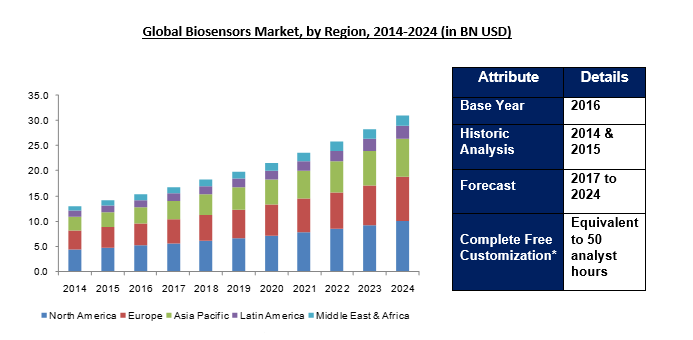
Top institutes in Asia:
Nanyang Technological University (NTU) Singapore
National University of Singapore (NUS)
The Hong Kong University of Science and Technology (HKUST)
KAIST - Korea Advanced Institute of Science and Technology
University of Hong Kong (HKU)
Tsinghua University, China
Fudan University, China
City University of Hong Kong
Peking University, China
The Chinese University of Hong Kong (CUHK), Hong Kong
Top institutes in USA:
Stanford University
Harvard University
California Institute of Technology (Caltech)
University of Chicago
Princeton University
Cornell University
Yale University
Columbia University
University of Pennsylvania
Top institutes in Europe:
Massachusetts Institute of Technology (MIT), United States
Stanford University, Stanford University
University of California, Berkeley (UCB), United States
University of Cambridge, United Kingdom
National University of Singapore (NUS), Singapore
California Institute of Technology (Caltech), United States
Delft University of Technology, The Netherlands
Imperial College London, United Kingdom
Kyoto University, Japan
University of Oxford, United Kingdom
Top institutes in UAE:
Al Ghurair University (AGU)
University of Dubai (UD)
Zayed University
Biotechnology University College Dubai (BUC)
The Higher Colleges of Technology (HCT)
American University in Dubai (AUD)
University of Wollongong in Dubai (UOWD)
British University in Dubai (BUiD)
American University in the Emirates (AUE)
Global Biosensors Market by Geography:

Global Biosensors Market by Geography
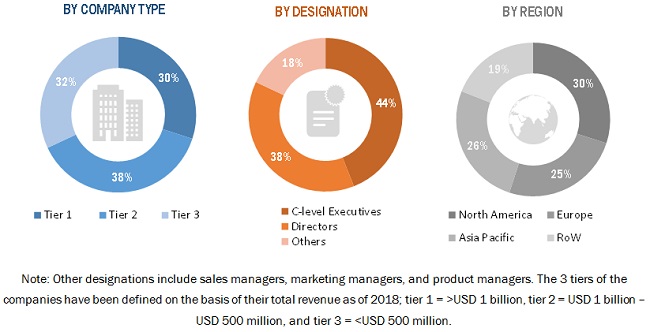
Past Conference Report
Biosensors and Bioelectronics 2019
We gratefully thank all our incredible Speakers, Conference Attendees, Students, Media Partners and Associations for making Biosensors and Bioelectronics 2019 Conference the excellent!
The 2nd World Congress on Biosensors and Bioelectronics, hosted by the Meetings International was held during November 27-28, 2019 at Singapore City, Singapore based on the theme “accelerating new research and innovations of biosensors technologies and bioelectronics”. Benevolent reaction and energetic participation became received from the Organizing Committee Members in conjunction with Scientists, Researchers, Students and leaders from numerous fields of Biosensors and Bioelectronics, who made this event a grand fulfilment.
Meetings International expresses its gratitude to the convention Speaker includes:
- Saji Alex, Government College for Women, India
- Viktoriya Pyeshkova, National Academy of Sciences of Ukraine, Ukraine
- Yihao Chen, Tsinghua University, China
- Si-Min Lu, East China University of Science and Technology, China
- Smriti sri, Jawaharlal Nehru University, India
- Suman Chatterjee, Indian Institute of Science, India
- Bhushan V, Indian Institute of Science, India
- Chunxiu Liu, Chinese Academy of Sciences (IECAS), China
- Melkamu Biyana Regasa, Jimma University, Ethiopia
- Dongchen Zhu, University of Tokyo, Japan
- Marius Olariu, Technical University, Romania
- Ramyabayar Ramyasri, Fusion scientific, Singapore
- Li Juan Ang, National University of Singapore
- Jeremy K. K. Ang, Nano Sun Pte Ltd
- Mina Niazi, National University of Singapore
The meeting reflected various sessions, in which discussions were held on the following major scientific tracks:
- Biosensors, Bio-sensing Technologies
- Bioelectronics
- Bio-MEMS/NEMS
- Nanotechnology in Biosensors
- Microfluidics- Technology & Healthcare
- Nano-bioelectronics
- Bioinstrumentation
- Optical Biosensors
- Biosensors for Environmental Monitoring
- Biosensors in Drug Discovery
- Biomechatronics and Biotransducer
- Biomedical Engineering
Meetings International Group offers it’s heartfelt our eminent personalities who supported the conference by facilitating the discussion forums. Meetings International also took privilege to felicitate the Keynote Speakers, Organizing Committee Members, Chairs and Sponsors who supported this event.
With the success of Biosensors and Bioelectronics 2019, Meetings International is proud to announce the “3rd World Congress on Biosensors and Bioelectronics” to be held during July 20-21, 2019 at Paris, France.
See you soon at Paris, France!
Conclusion:
Biosensors 2020 are able to sense and respond to environment around them. They have the potential to improve existing technology and add new functionality to products. They have a capability to work in multifunctional way. Thus we conclude that there is an important role of Biosensors and Bioelectronics in our life.
Meetings International recognizes the commitment and amazing work in all fields of academics and research. By recognizing their contribution; Meetings International inspires and motivates scholars, researchers and academics by awarding the Best YRF and Researcher Awards in all academic disciplines and categories along with other specific awards. These awards include prestigious Certificate of Award with other gifts.
Biosensors and Bioelectronics 2020 chooses a relevant keynote speaker to speak at conference. All accepted keynote speakers proposals will be considered for the Best Keynote Speaker Awards. The committee will select a number of candidates for the award among the accepted proposals. The winner will be selected at the conference, taking into consideration both the proposal and the presentation. Best keynote speaker can help to boost motivation, change their way of thinking and make audience energized and inspired. For Keynote the person should be eminent or highly affiliated like Dean, Professor, HOD, Chair persons, CEO, CFO, MD etc. Selection of the Best Keynote Speaker will be made on the basis of the participant contribution and years of experience in the respective research field. Each submission will be accepted based on the quality of abstract and conference theme. Irrelevant submissions will be rejected .The acceptance and rejection of abstract submissions will be selected by the Organizing committee. All submissions will go through a quality checking. Final approved abstract will consider for Keynote awards.

Biosensors and Bioelectronics 2020 believes in recognising our best speaker. The best speaker is selected as per their research abstract before the conference. All winners are determined by a selection panel. This award is designed to recognise and identify outstanding speakers who have achieved recent extraordinary eminence and success. Being an outstanding speaker means to deliver a message that engages an audience. The outstanding speaker awards will also be given on the basis of organization and professionalism of presentation, communication skills of the presenter and appropriate use of time. Each session will be evaluated separately. For speaker the person should be Professor, Researcher, Scientist, Entrepreneur etc. .Selection of the Speaker will be made on the basis of the participant contribution in the respective research field. Each submission will be accepted based on the quality of abstract and conference sessions. Irrelevant submissions will be rejected. The acceptance and rejection of abstract submissions will be selected by the Organizing committee. All submissions will go through a procedure of quality checking by our team. Final approved abstract will consider for outstanding speaker award.
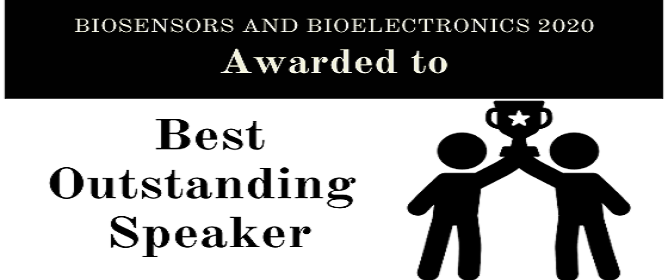
The organising committee can avail in the process of managing the multiple tasks that need to be done. Committee members, having a good erudition of the event management plan, are well placed to provide training, supervision and assistance to other personnel involved in the organisation of the event. Meetings International will honour as a best OCM the individual who has demonstrated their support and guidance throughout the conference. OCM should be eminent or highly affiliated like Dean, Professor, HOD, Chair persons, CEO, CFO, MD etc. Selection of the best OCM will be made on the basis of the participant contribution and years of experience in the respective research field. They must have good number of research papers and citations and should be more number of years of experience.
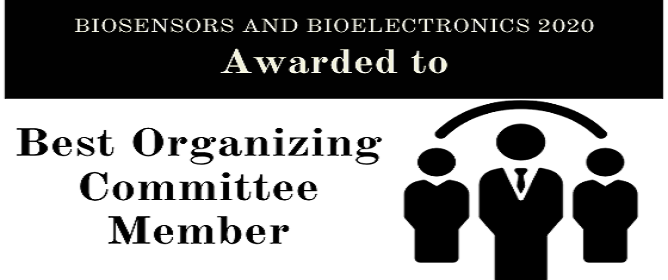
Outstanding Masters/Ph.D/Post. Doc Thesis work presentation Award
Biosensors and Bioelectronics 2020 gives the opportunity to young researchers in the different field of conferences. The best participants are selected as per their research abstract before the conference. If you are a young and dynamic researcher than you can join our conferences to explore new idea and research. A panel of judges will select the best YRF. Best YRF will be recognized publicly at the end of the conference. The Best YRF Awards will be given to the most outstanding presentation presented by a participant who has registered under the student category. Undergraduates, Master students, and Ph.D. students will be considered under this category. Selection of the YRF will be made on the basis of the participant contribution in the respective research field each submission will be accepted based on the sessions of the conference. Irrelevant submissions will be rejected. The acceptance and rejection of abstract submissions will be selected by the committee. All submissions will go through a quality checking. Final approved abstract will consider for YRF award.
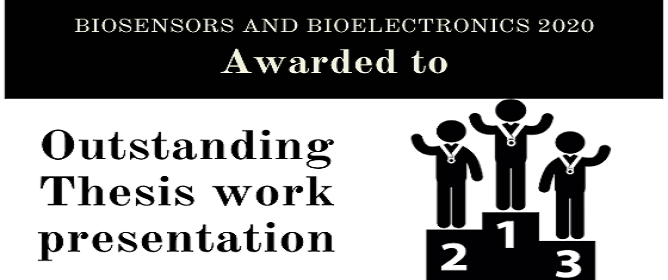
To be eligible for the awards Students interested in having their posters considered for the Biosensors and Bioelectronics 2020 conference, they must have submitted an abstract of their poster to the conference. The award committee will consider all posters that relate to the study of public opinion, whether they focus on theory, substantive findings, research methods, and/or statistical techniques used in such research. All posters will automatically be considered for the Poster Awards and the posters will take place in the conference venue and Poster Judges will select the best posters. The winners will be formally announced during the closing ceremony. The winners will receive a certificate award.
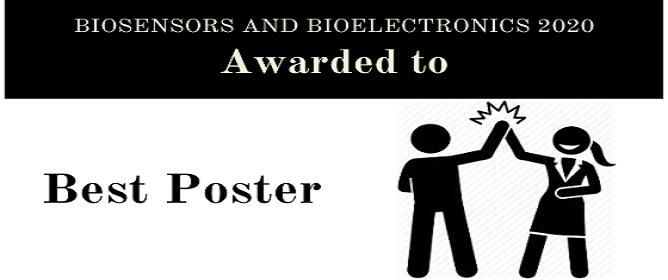
- Poster Size: Each poster should be approximately 1x1 M long. The title, contents and the author’s information should be clearly visible from a distance of 1-2 feet.
- Content: Use fonts such as Arial/Times New Roman in a reasonable font size that should be easy to read.
- The spacing between the lines should also be taken into consideration.
- A very simple format should be used representing all the details about the research carried by the author.
- Long narrated paragraphs should be avoided.
- Short phrases and bulleted points should be used in the poster to present the main highlights of the work done.
- Only abstracts submitted in English will be reviewed.
- Abstracts must not exceed 500 words (excluding the title, author affiliation and biography)
- Abstract should follow the instructions on the following template (Abstract Template).
- Do not include references or figures in the keynote abstract.
- Abstract should contain biography, photograph and short description about research
- Abstract must contain presenter name, affiliation and country
- Abstract title and abstract content should be relevant
Meetings Int. is a worldwide pioneer in delivering top notch gatherings, workshops and symposia in every significant field of science, innovation and medication worldwide receives 400,000+ online visitors with 1000+ sessions which confirm the outstanding pool of new users and visitors creating a platform to build your market place globally. Since its initiation, Meetings Int. has been related with national and global affiliations, organizations and elevated level people, committed to have world class meetings and occasions so its provide a big platform to show your product and advertise.
The explorers traffic is the benchmark for advertisement and the Biosensors website is continually dragged in observer over the world. As specify by the Google Analytics, in excess of 50,743 Researchers and industrialist are visiting to our conference sites. Bioelectronics and Biosensors help you to put the spotlight on your brand by advertising with more than 9 million+ readers worldwide and about 5 million+ hits every month on our site.We provide a good opportunity to boost your business on our platform. We offer a range of eye-catching advertising spaces and branding. Researchers from significant nations including United States, Japan, United Kingdom, India, France, Taiwan, and Germany visit our conference site. Subscribers and conference attendees can be your upcoming enthusiastic customers. We maintain high quality and ethical standards in event industry, which makes us unique and better than the rest.
Advertisement banner must be provided by the advertising company and must be in the jpg or jpeg format. The banner must be of high resolution and must not have copyright infringement.
For further queries, connect our Program Manager at biosensors@annualmeetings.net; contact@meetingsint.com
You can also connect us via WhatsApp: +65 3158 1626 / +44 1250 400 009
Webinar Benefits:
-
Affordability, Certification
-
Online publication of Abstract with the DOI no. and Biography in our website which has 25 Million visitors
-
Increasing Connections and Interactive
Young Scientist Awards at Biosensors and Bioelectronics 2020 for the best researches in Biosensors and Bioelectronics
Meetings International is announcing Young Scientist Awards through 3rd World Congress on Biosensors and Bioelectronics (Biosensors and Bioelectronics 2020) which is scheduled at Paris, France during July 20-21, 2020. This Biosensors and Bioelectronics Conference focuses on “Future development and new intervention in biosensors and bioelectronics”.
Biosensors and Bioelectronics 2020 and upcoming conferences will recognise participants who have significantly added value to the scientific community of environmental science and provide them outstanding Young Scientist Awards. The Young Scientist Award will provide a strong professional development opportunity for young researches by meeting experts to exchange and share their experiences at our international conferences.
Biosensors and Bioelectronics 2020 focuses mainly on Nano biosensors, Lab-on-a-chip and multiplexed sensors, Microfluidics, Commercial biosensors, DNA- and nucleic acid-based sensors, Photonic Sensor, Printed biosensors, Enzyme-based biosensors, and wearable biosensors. Biosensors and Bioelectronics conference operating committee is providing a platform for all the budding young researchers, young investigators, post-graduate/Master students, PhD. students and trainees to showcase their research and innovation.
Eligibility:
Young Scientists, faculty members, post-doctoral fellows, PhD scholars and bright Final Year MSc and M.Phil. Candidates. Persons from Scientific Industry can also participate.
Benefits: The Young Scientist Feature is a platform to promote young researchers in their respective area by giving them a chance to present their achievements and future perspectives.
- Acknowledgement as YRF Awardee
- Promotion on the conference website, Young Researcher Awards and certificates
- Link on the conference website
- Recognition on Meetings Int. Award Page
- Chances to coordinate with partners around the world
- Research work can be published in the relevant journal without any publication fee
Criteria:
- All presented abstracts will automatically be considered for the Award.
- All the presentation will be evaluated in the conference venue
- All the awards will be selected by the judges of the award category
- The winners of the Young Scientist Award will receive award certificate.
- The awards will be assessed as far as plan and format, intelligence, argumentation and approach, familiarity with past work, engaging quality, message and primary concerns, parity of content visuals, and by and large impression.
Guidelines:
- All submissions must be in English.
- The topic must fit into scientific sessions of the conference
- Each individual participant is allowed to submit maximum 2 papers
- Abstract must be submitted online as per the given abstract template
- Abstracts must be written in Times New Roman and font size will be 12
- Abstract must contain title, name, affiliation, country, speakers biography, recent photograph, image and reference
Conditions of Acceptance:
To receive the award, the awardee must submit the presentation for which the award is given, for publication at the website, along with author permission. Failure to submit the PPT and permission within the designated timeframe will result in forfeiture of award.
Award Announcements:
Official announcement of the recipients will occur after the completion of Biosensors and Bioelectronics Conference.
- Nanoelectronic Biosensors
- Lab-on-a-chip & Multiplexed sensors
- Microfluidics & Bio-MEMS/NEMS
- Commercial biosensors & manufacturing
- Nucleic acid-based sensors
- Transducers & Photonic Sensor
- Printed biosensors and microfabrication
- Whole cell- and organ-based biosensors
- Enzyme-based biosensors
- Wireless Sensor Networks
- Bioelectronics and Bioinstrumentation
- Optical Chemical Sensors
- Journal of Nanomaterials & Molecular Nanotechnology
- Journal of Electrical Engineering and Electronic Technology
- Biomaterials and Medical Applications
- Advanced Biomedical Research and Innovation
- Journal of Biochemical Engineering & Bioprocess Technology
10 Organizing Committee Members
36 Renowned Speakers
Maria Goreti Sales
University of Coimbra
Portugal
Evan K. Wujcik
University of Alabama
USA
Zulfiqur Ali
Teesside University
UK
Valtencir Zucolotto
University of Sao Paulo
Brazil
Jiayue Shen
SUNY Polytechnic Institute
USA
Estela Climent Terol
Federal Institute for Materials Research and Testing
Germany
Artur Jedrzak
Poznan University of Technology
Poland
Miguel M Erenas
University of Granada
Spain
Paulo Bueno
Nano bionics research group
Brazil
Maria Gabriela Almeida
Higher Education Cooperative - Egas Moniz
Portugal
Tom Zimmermann
Michigan State University
USA
Ajay Agarwal
CSIR-Central Electronics Engineering Research Institute
India
Kevin Ton
Tripod Nano Technology Corporation
Taiwan
Ebru Saatci
Erciyes University
Turkey
Marie Clement
Linxen
France
Catarina Barbosa
NOVA University of Lisbon
Portugal
Maria Kuznowicz
Poznan University of Technology
Poland
Vienna Mott
Draper Laboratory
USA
Jorge Fernández
Public university in Campinas
Brazil
Aurel Ymeti
NanoBio Research Group & Nanoalmyona BV
Netherlands
Jean-Christophe P. Gabriel
Nanyang Technological University
Singapore
Lidija Malic
National Research Council
Canada
Domenica Tonelli
University of Bologna
Italy
Xuefeng Wang
Iowa State University
USA
Peter Rolfe
Oxford BioHorizons Ltd
UK
Matthias Schulze
Fraunhofer IPMS
Germany
Anupam Mukherjee
General Silicones Co.Ltd.
Taiwan
Isacco Gualandi
University of Bologna
Italy
Sujasha Gupta
The Ohio State University
USA
Federica Mariani
University of Bologna
Italy
Vinayak Pachkawade
University of Liege
Belgium
Muma John Neba
Cameroon
Maria Pace
Microsoft
USA
Omid Akbarzadeh
University of Malaya
Malaysia
Catherine Chan
Startupblink Global Startup Ecosystem
Hong Kong
Roma seo
Seoul National University of Science & Technology
South Korea


